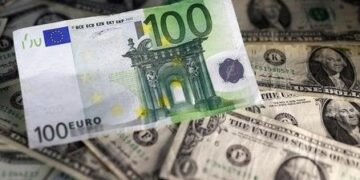In brief
- Bitcoin rose above $97,000.
- A stronger-than-expected jobs report dented rate cut hopes.
- U.S. stocks recovered from Trump’s “Liberation Day” announcement.
The price of Bitcoin edged up on Friday as investors weighed a stronger-than-expected jobs report against signs of a slowing economy earlier this week.
The reigning cryptocurrency by market cap was recently changing hands around $97,000, a 0.4% increase over the past 24 hours, according to crypto data provider CoinGecko. Bitcoin rose over $97,800 at one point earlier in the day, its highest point since late February. Altcoins were mostly flat, with XRP and Solana falling 0.1% to $2.21 and 1.6% to $148, respectively.
The U.S. economy added 177,000 nonfarm payrolls in April, far outpacing 130,000 jobs that economists penciled in, while the unemployment rate stayed at 4.2%, per Trading Economics.
The snapshot conflicted with an economic growth reading earlier this week, which showed that the U.S. economy contracted for the first time in three years. That lifted hopes of rate cuts from the Federal Reserve, on the notion that the central bank may be forced to stimulate an economy that is likely to be hamstrung by U.S. President Donald Trump’s trade tariffs.
Traders grew more convinced on Friday that the Fed would hold rates steady at the end of its June policy meeting, with odds rising to 66% from 42% a day prior, per CME FedWatch.
Wall Street indices advanced, with the S&P 500 and tech-heavy Nasdaq fully recovering from Trump’s unveiling of “reciprocal” tariffs on April 2. After doubling down on its efforts to buy Bitcoin, Strategy’s stock price rose 3.4% to $395 per share, despite reporting a $5.9 billion loss in the first quarter a day before.
Although U.S. stocks have recovered ground lost after Trump’s April 2 “Liberation Day” announcement, the greenback is “still trading notably weaker” than it did a month ago, Allianz Chief Economic Advisor Mohamed El-Erian, said on X, formerly Twitter, on Friday.
“The currency known historically as the ‘mighty dollar’ is going through a rough patch,” he said. “That is fueling quite a debate about whether it’s primarily a cyclical or secular phenomenon.”
The U.S. Dollar Index (DXY), which measures shifts in the dollar’s value relative to a basket of other currencies, has fallen 3.7% over the past month, according to Yahoo Finance. The price of gold has meanwhile jumped 3% to around $3,200 per ounce.
As Trump’s trade war threatens to disrupt the current economic order, and tip the U.S. economy into a recession, Matt Mena, a crypto research strategist at asset manager 21Shares, recently told Decrypt that traders are increasingly viewing Bitcoin as a safe-haven like gold.
He pointed to this week’s PCE reading, which showed cooling inflation in March, and a contraction in Gross Domestic Product, as indicators enforcing that shift.
“PCE and GDP data reignited fears of stagflation and a potential recession,” he said. “In response, investors are reallocating into Bitcoin, viewing it as a flight-to-safety asset during times of economic uncertainty—especially given its non-sovereign, supply-capped nature.”
Edited by James Rubin
Daily Debrief Newsletter
Start every day with the top news stories right now, plus original features, a podcast, videos and more.














